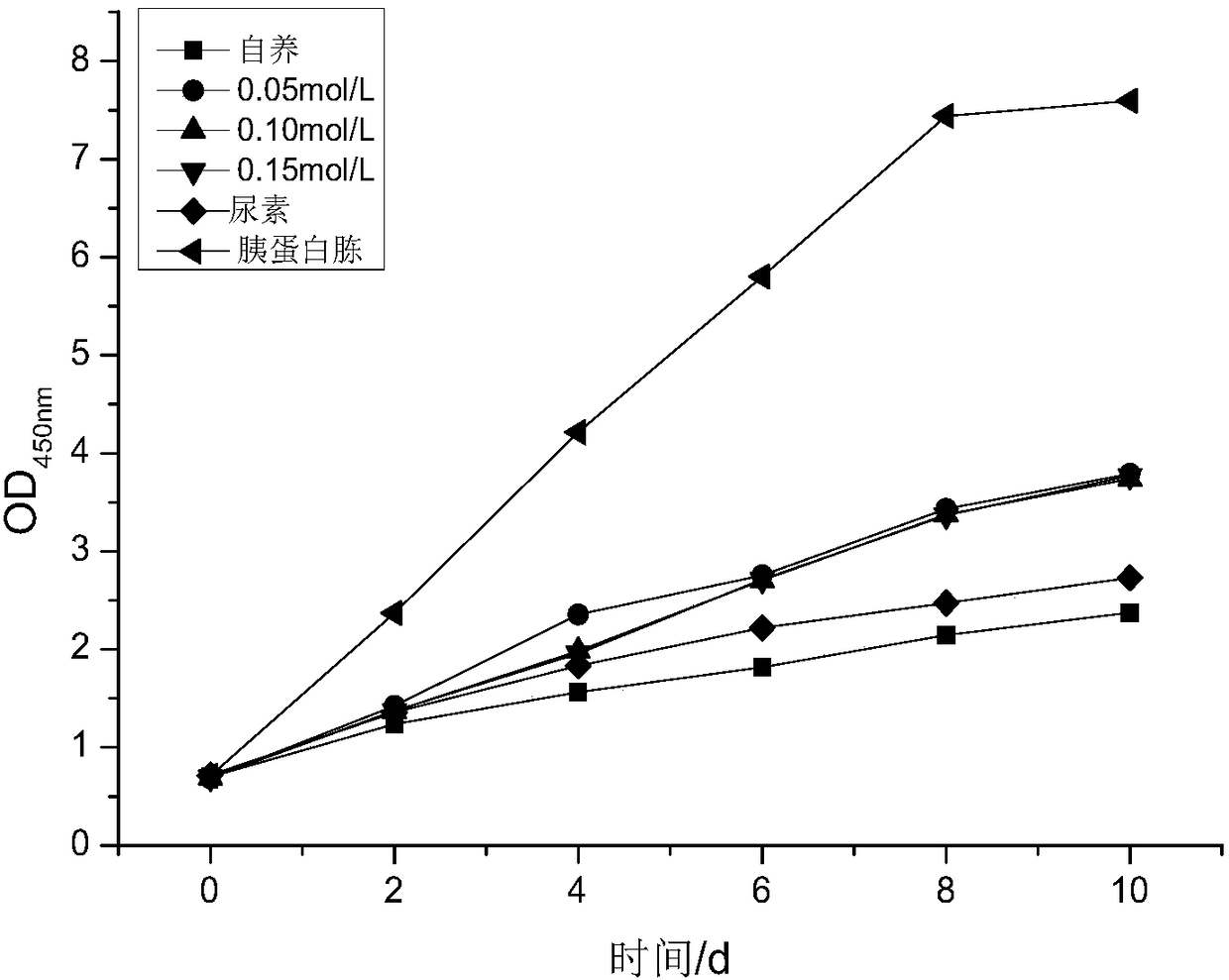Method used for rapid nondestructive detection of fucoxanthin in Phaeodactylum tricornutum cells
A fucoxanthin and non-destructive testing technology, which is applied in the direction of measuring devices, instruments, and biological particle analysis, can solve the problems of long analysis process time, fucoxanthin production process and quality control time-consuming and labor-intensive problems, and achieve simplified detection steps , shorten detection time, and simple sample pretreatment
- Summary
- Abstract
- Description
- Claims
- Application Information
AI Technical Summary
Problems solved by technology
Method used
Image
Examples
Embodiment Construction
[0044] In order to make the object, technical solution and advantages of the present invention clearer, preferred embodiments of the present invention are described in detail below.
[0045] Flow cytometry (Flow Cytometry) can excite the fucoxanthin in the cells of Phaeodactylum tricornutum to emit fluorescence at 488nm, and detect the emission wavelengths of Phaeodactylum tricornutum cells at 533nm (FL1 channel) and 585nm (FL2 channel) respectively. mean fluorescence intensity. The inventors of the present application found that there is a high positive correlation between the average fluorescence intensity at the two specific emission wavelengths and the intracellular fucoxanthin content of Phaeodactylum tricornutum. By measuring the average fluorescence intensity and matching it with the HPLC measurement results, the accumulation of fucoxanthin can be accurately, quickly and non-destructively reflected. Compared with conventional methods, this method can greatly improve the ...
PUM
| Property | Measurement | Unit |
|---|---|---|
| Cell density | aaaaa | aaaaa |
| Aperture | aaaaa | aaaaa |
Abstract
Description
Claims
Application Information
 Login to View More
Login to View More - R&D
- Intellectual Property
- Life Sciences
- Materials
- Tech Scout
- Unparalleled Data Quality
- Higher Quality Content
- 60% Fewer Hallucinations
Browse by: Latest US Patents, China's latest patents, Technical Efficacy Thesaurus, Application Domain, Technology Topic, Popular Technical Reports.
© 2025 PatSnap. All rights reserved.Legal|Privacy policy|Modern Slavery Act Transparency Statement|Sitemap|About US| Contact US: help@patsnap.com



